It is not always necessary to sterilize jars if you plan to process your recipe for more than 10 minutes for elevations of less than 1000 ft.
If you live above the 1000ft elevation, you’ll need to add an extra minute to the process time, for each additional 1000ft of elevation. It is also not necessary to pre-sterilize your canning jars if you’re recipe calls for using a pressure canner.
It is always important to wash your jars in hot soapy water before each use to insure there is no dust, broken glass or other contaminates inside the jars. It is still recommended that you heat your jars to prevent them from shattering or cracking when a hot preservative hits them.
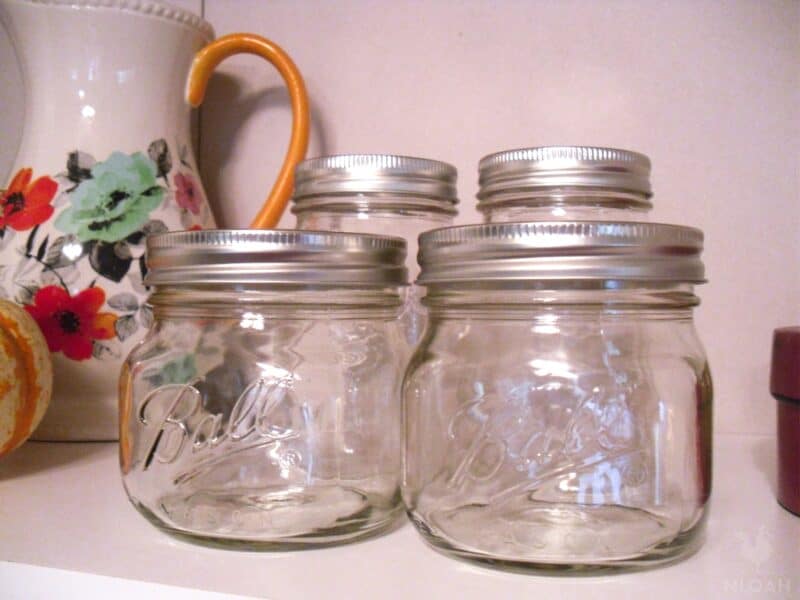
When necessary, sterilization of canning jars before the canning procedure helps to prevent the growth of mold and helps to reduce the risk of contaminates by microorganisms. Lots of jam and jelly recipe’s only call for a 5-minute process time and so, your canning jars must be sterilized.
Sterilizing canning jars before use makes some feel safer about canning for their family. To lessen the hassle of the sterilization process, I’ll compare different ways I can get my jars safe and clean. Let’s see which methods may be easier, cleaner and faster than others.
Water Bath Sterilization
This sterilization method is tried and true, but make sure you start with clean jars. Wash your jars prior to use to remove any dust or stuck on debris. Be sure to check for cracks or chips, paying close attention to the top of the jar.
These may compromise your canning process and result in a seal failure. You want to make sure you have enough jars for your recipe, so finding a crack in an unchecked jar would be a major bummer!
Steps:
- Simply place your jars in your canning pot of choice, preferably the same pot that you plan to do your canning, so you can recycle the water. Be sure to place the jars right side up.
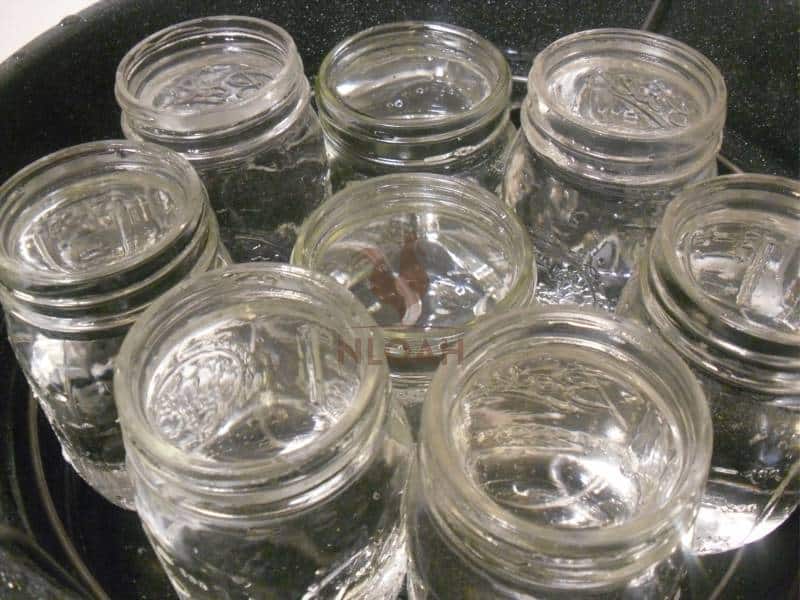
- Fill the pot and the jars with water until the water is about an inch over the top of the jars:
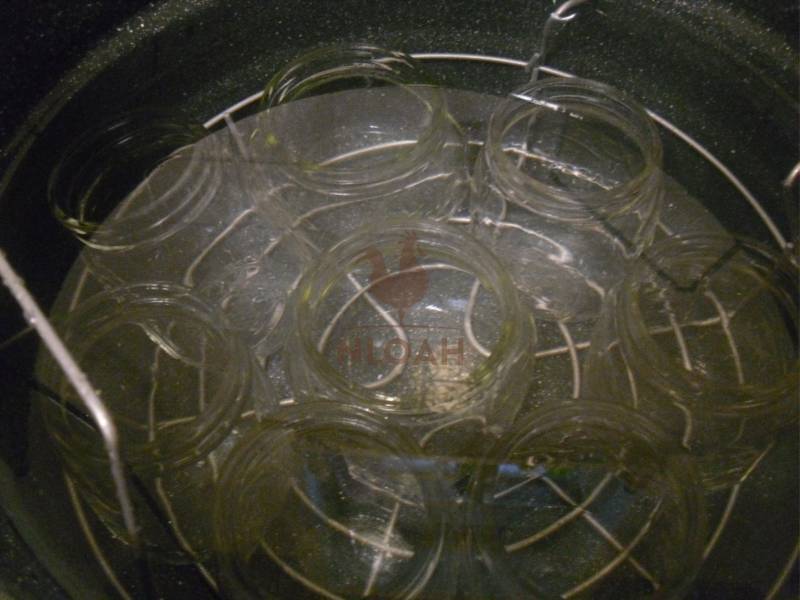
- Bring the water to a boil and let it stay at a boil for at least 10 minutes. If you live in an altitude higher than 1000ft, you’ll need to add 1 minute of boiling time for each 1000ft of elevation.
- Once finished, turn off the heat but leave the jars in the hot water until you’re ready to start canning.
This method is simple enough, but it tends to make a mess with all the water needed. It also creates a lot of water spots on your jars that are not harmful but also not pretty. Try adding 2 tablespoons of vinegar to the water to help keep the water spots form appearing.
Sterilizing Jars in Oven
Of course, you’ll want to make sure you wash each jar prior to use and take the time to inspect each jar for cracks and chips as with each sterilization method. This method may prove to be your favorite as you have no extra water mess no cleanup afterwards. The oven method uses the heat of the oven to sterilize the jars themselves.
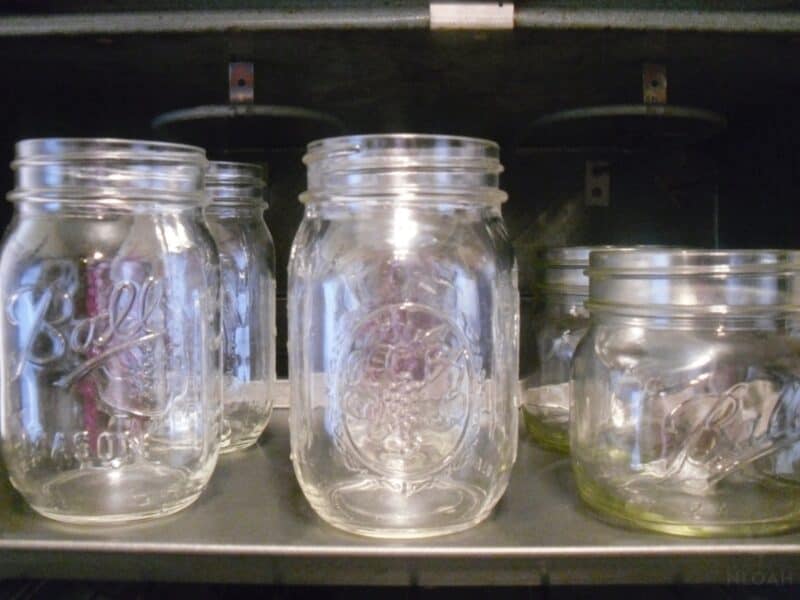
Steps:
- First, you’ll need to set your oven to 225 degrees F.
- Place your jars on a cookie sheet so you don’t have to balance them on the bars of your oven racks. Make sure none of the jars are touching so that the air can sterilize every side of each jar.
- Place everything in the preheated oven and set a timer for 10 minutes. Don’t open the oven door before the 10 minutes is up or you’ll allow the oven temperature to drop. You can leave the jars in the warm oven until you’re ready to use them. They will be hot so make sure to use your oven mitt!
Dishwasher Method
The dishwasher method is super simple and it’s a great time saver! You can set your dishwasher and walk away. So, if you haven’t finished up the recipe you plan to put in the jars, go ahead and get the jars in the oven, then continue with your salsa, jam or pickles.
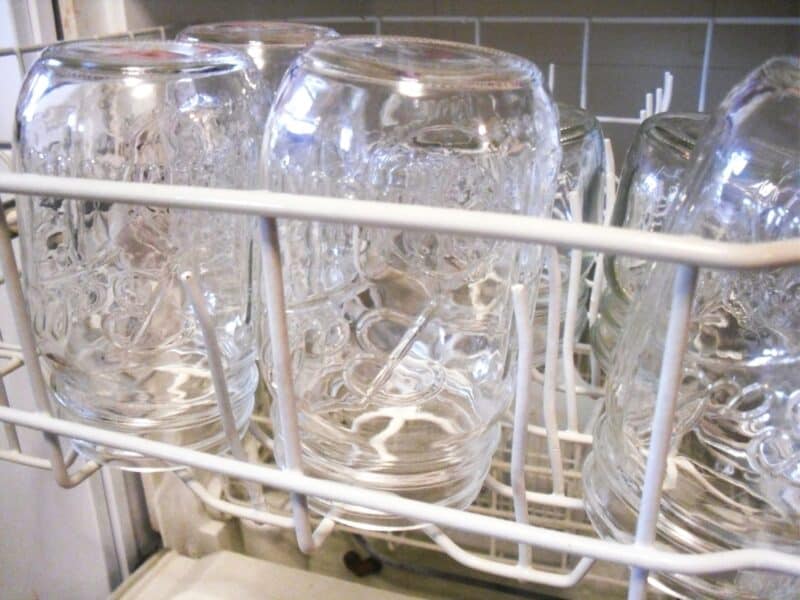
The great thing is the dish washer will take care of the washing step for you! You do want to make sure you check your jars for cracks and chips especially around the lip. The heat of the dishwasher will simultaneously wash and sterilize your jars for you. Then you can pull them out as needed for your canning recipe.
Microwave Method
- For this method, you’ll need to set your oven to 280 degrees, so you have a place to dry your jar once they are sterilized.
- Next, place your jars in the microwave a few at a time, leaving space between them.
- Fill them half way with water. Microwave your water filled jars until the water starts to boil. This is what will sterilize the jars.
- Carefully remove the jars from the microwave as they will be hot. Poor the water from each one out and place in the hot oven upside down. Allow the heat of the oven to evaporate the remaining water off the jars, and help the jars to expand to prepare them for hot recipes.
Of course, you still need to pre-wash your jars to remove excess or stuck on debris from any previous uses. This is when you can inspect them to make sure they are fit for use. The downside to this method is that it uses a lot of water and requires the use of two appliances. However, it still may be less messy and take less time than the water bath sterilization method.
Off-Grid Sterilization
Home canning or sterilization can be done without the use of electricity if you have an outdoor oven or a firepit with a grill. It’s a great option for power outages or off grid homes. You must make sure you have enough firewood to keep the fire hot and water boiling if you’re using the water bath method. If you’re using an off-grid oven make sure you have a thermometer to monitor your oven temp.
What About the Lids?
Lids can only be used once for canning. After the first use they won’t reseal properly and so your food preservation won’t be safe. They’re still great to use with jars for storing dry goods or odds and ends, so don’t throw them out!
The lids do not need to be sterilized prior to the canning process. Since the change of the sealing band from Latex to Plastisol, pre-heating your lids is not required. Latex needed to be heated so that it could soften and create a good seal. The plastisol does not need to be pre-heated and will seal effectively in the canning process.
You can still heat your lids if you prefer. You can simmer them at 180 degrees but do not allow the water to boil. You can always just give the lids a good wash in hot soapy water and leave them at room temperature until needed. Your screw band rings that help to hold the lid on do not need to be sterilized as they do not touch any food.
Which Method Is the Best?
Determining which method is best for you, is up to you. Some believe that to truly sterilize a jar, it needs to be submerged in boiling water for a time. If this is your belief, the water bath method may be for you.
If a dishwasher is available, it’s certainly the easiest and most hands-free way to achieving a clean and sterile jar. The oven method is hassle free as well without the mess created by juggling water back and forth.
If you prefer to avoid the sterilization step all together, simply make sure you’re using a recipe or that requires a process time of 10 or more minutes depending on your altitude. If your recipe only calls for 5 minutes of process time, its ok to go ahead and process longer to insure your jars and lids are sterile. Happy canning!
Are you comfortable canning in a jar that hasn’t been pre-sterilized? Tell us why or why not!

Paige is a writer with a background beginner homesteading, small scale self-sufficiency, and animal topics. Paige and her husband spend time away from work playing with their daughter, keeping their chickens from destroying the vegetable garden, and snuggling their 3 dogs and 2 cats.
